Rig tour: City And Colour
Dallas Green and co. talk tonal shades
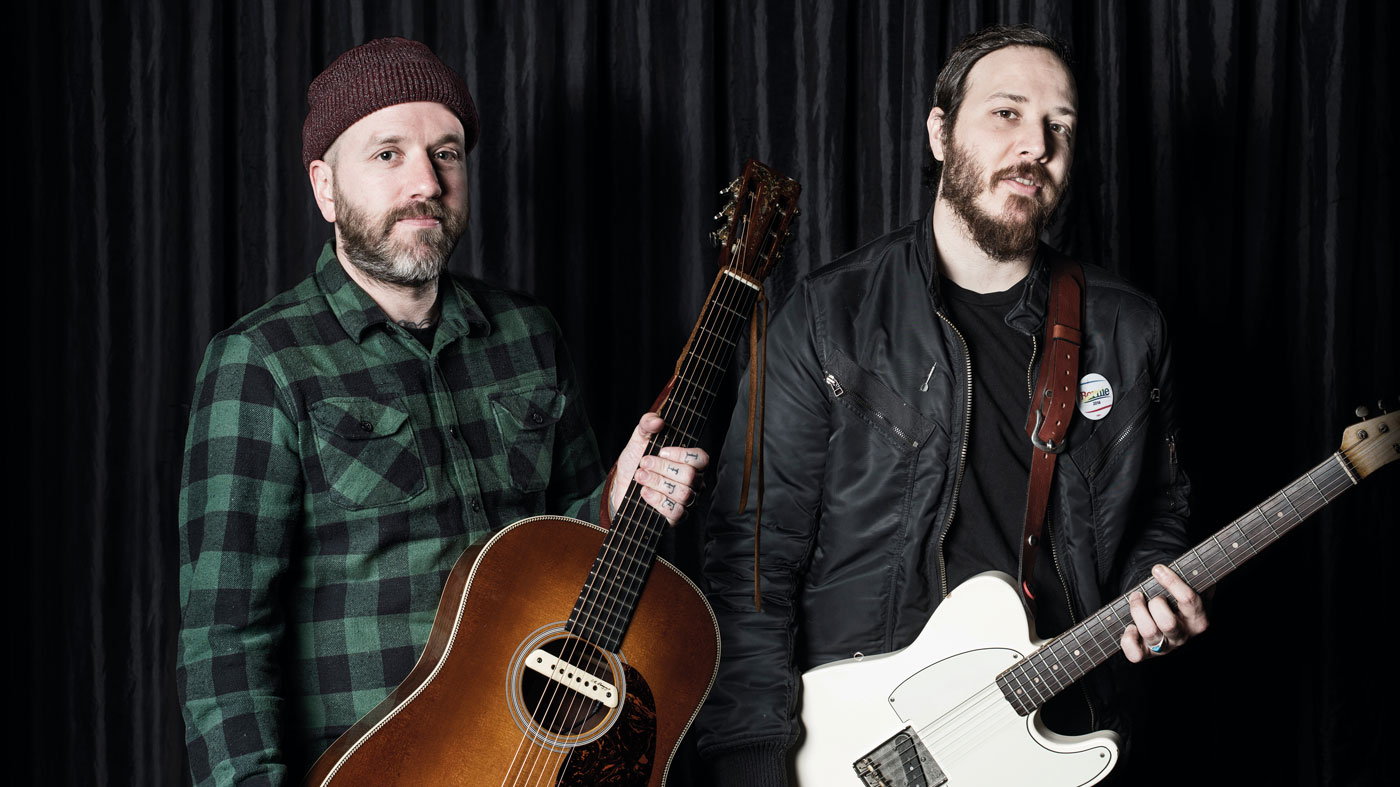
Introduction
Dallas Green and Dante Schwebel show us the gear behind City And Colour’s new louder, rockier sound…
Dallas Green’s melodic indie-rock combo have moved further away from the acoustic vibes of their previous records
City And Colour’s fifth album, If I Should Go Before You, released last October, took Dallas Green’s melodic indie-rock combo further away from the acoustic vibes of their previous records. Layers of gorgeous reverbs and echoing delays soared across the grooves as the Alexisonfire axe man and his touring band plugged in and let the sparks fly.
We caught up with Dallas, guitarist Dante Schwebel - who’s also side-manned for Dan Auerbach - and pedal-steel player Matt Kelly at East London’s art deco Mecca the Troxy to find out the rig secrets behind City And Colour’s impressive live sonics.
Don't Miss
City And Colour (Dallas Green) performs Of Space And Time unplugged
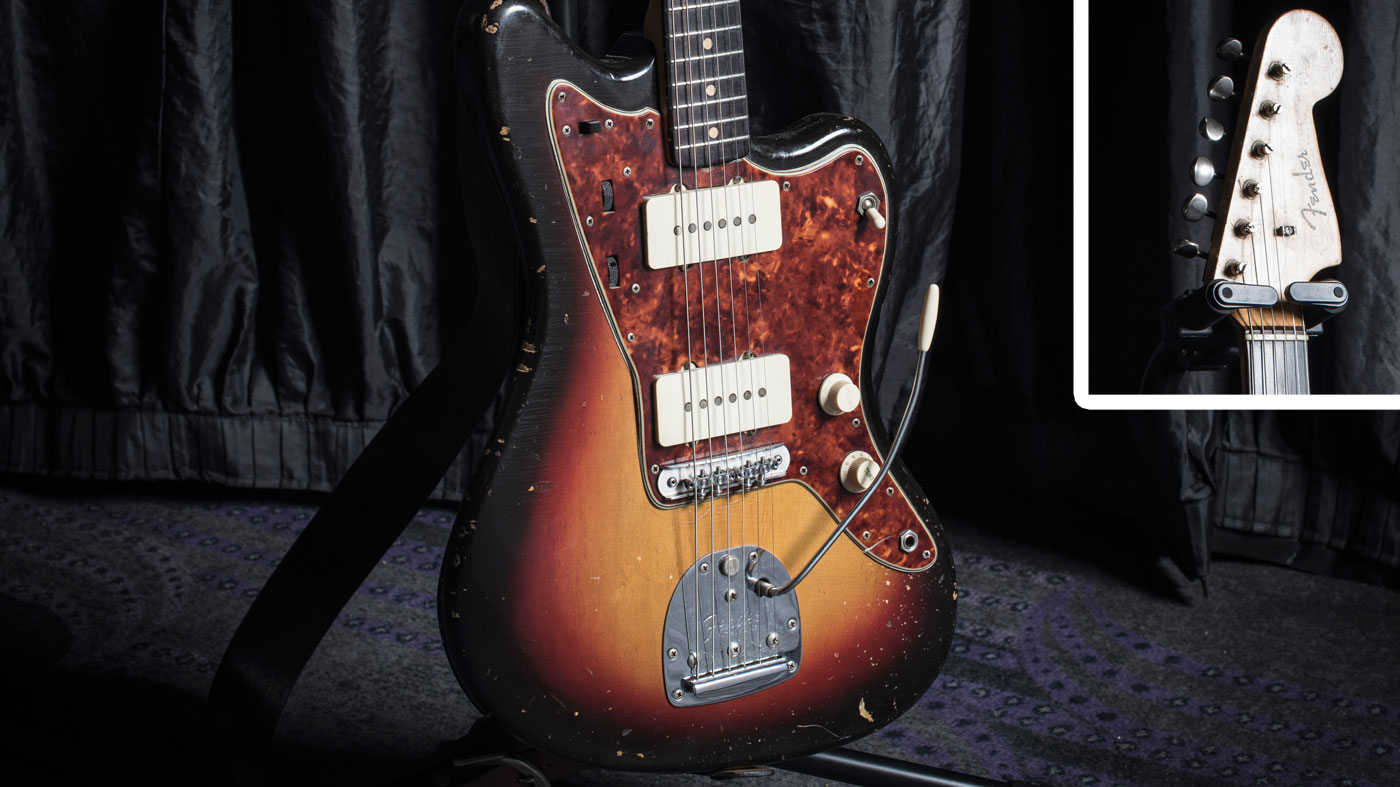
1963 Fender Jazzmaster
Dallas Green: “I’ve always loved [Jazzmasters]. I used to try and play them in Alexisonfire. Growing up, Dinosaur Jr was one of my favourite bands, but I could never figure out how to get a Jazzmaster to sound like J Mascis did. But when I started City And Colour full-time, that was the window.
This guy I’ve had for about five or six years and is probably my favourite guitar
“This guy I’ve had for about five or six years and is probably my favourite guitar. Jazzmaster pickups can be so gnarly and bright but this one can sound however I want it to - nice and bright and clean almost like an acoustic, but then I can run a crazy distortion pedal through it and it turns into a monster. I recorded the clean parts and the heavy parts on Woman with this. I use the neck pickup almost exclusively.
“Tonight, I’ll only use it on probably three songs. I can’t seem to not write songs in weird tunings so that’s why we have so many guitars. I play it in drop D, standard and then we also have this tuning where it’s in standard but then I tune the A up to a B and I use that on Northern Blues.”
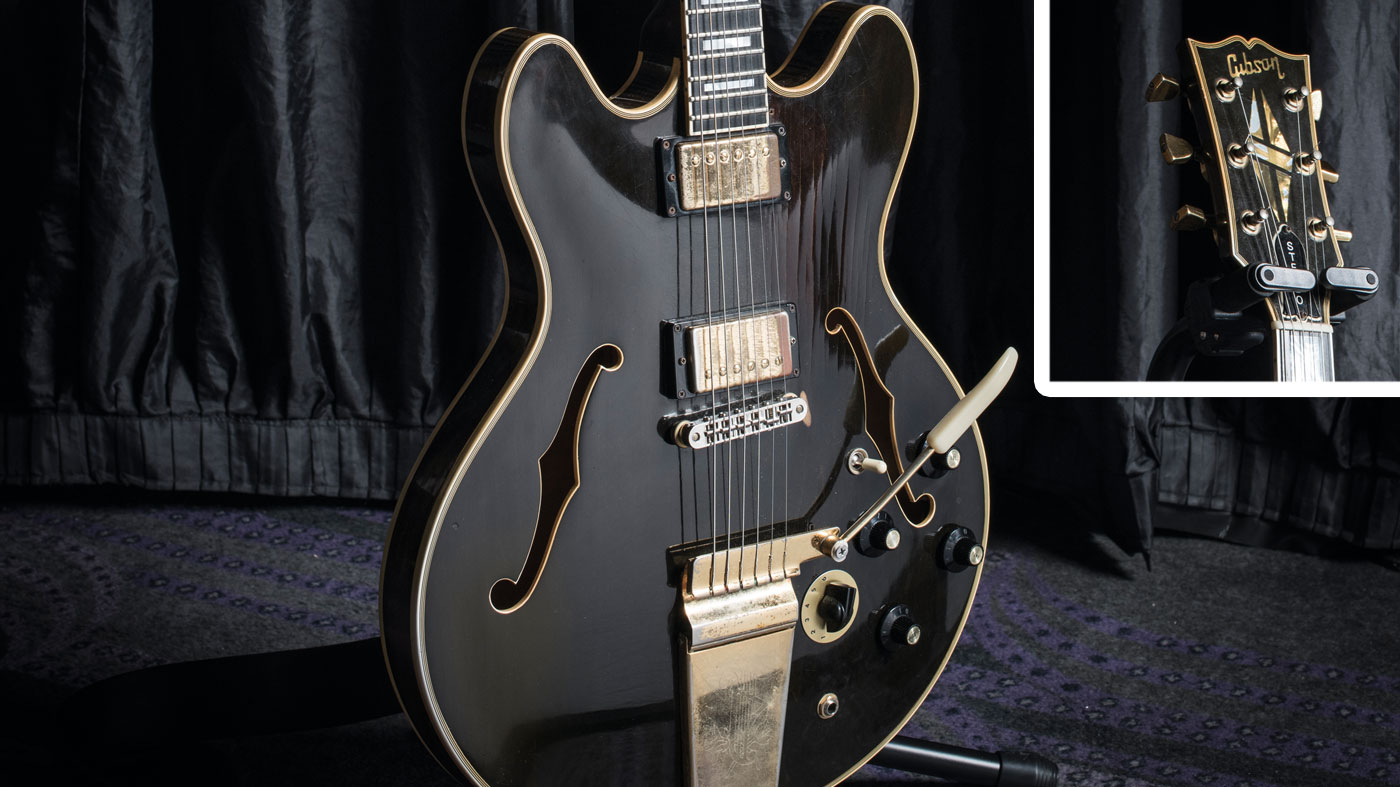
1976 Gibson ES-355
Dallas Green: “I’ve had this for almost 10 years now. It was originally stereo but I had it switched over to mono when I got it and then I got rid of the Varitone.
This one stays in E standard and I use it in the heavier rock songs like Woman
“The Varitone in this one just didn’t really do much for me. It added almost a pound and a half to the guitar, so I had the thing underneath taken out.
“I’ve always loved the Vibrola [tailpiece], too. This one stays in E standard and I use it in the heavier rock songs like Woman, Mizzy C, maybe Sorrowing Man and some older ones that we play pretty loud live.”
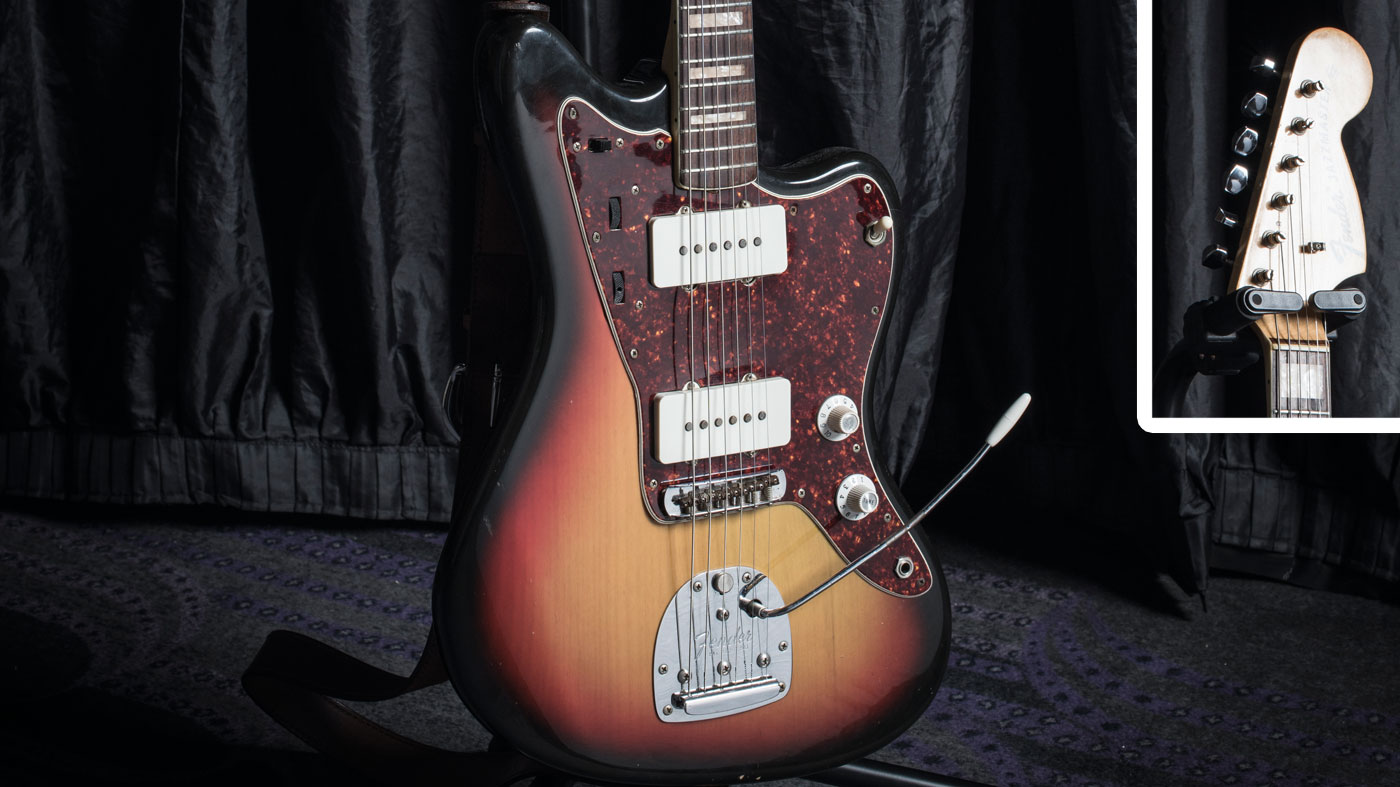
1966 Fender Jazzmaster
Dallas Green: “I’ve always loved the block inlay and the Sunburst. We actually bought this on eBay from England. It’s great, although it’s a little bit more standard Jazzmaster sounding.
It’s pretty clean and crisp so we use it for the more jangly songs
“It’s pretty clean and crisp so we use it for the more jangly songs. I use it for Lover Come Back, which is capo three and then I do a double drop, and Hello I’m In Delaware, which is capo’d on two, then dropped.”
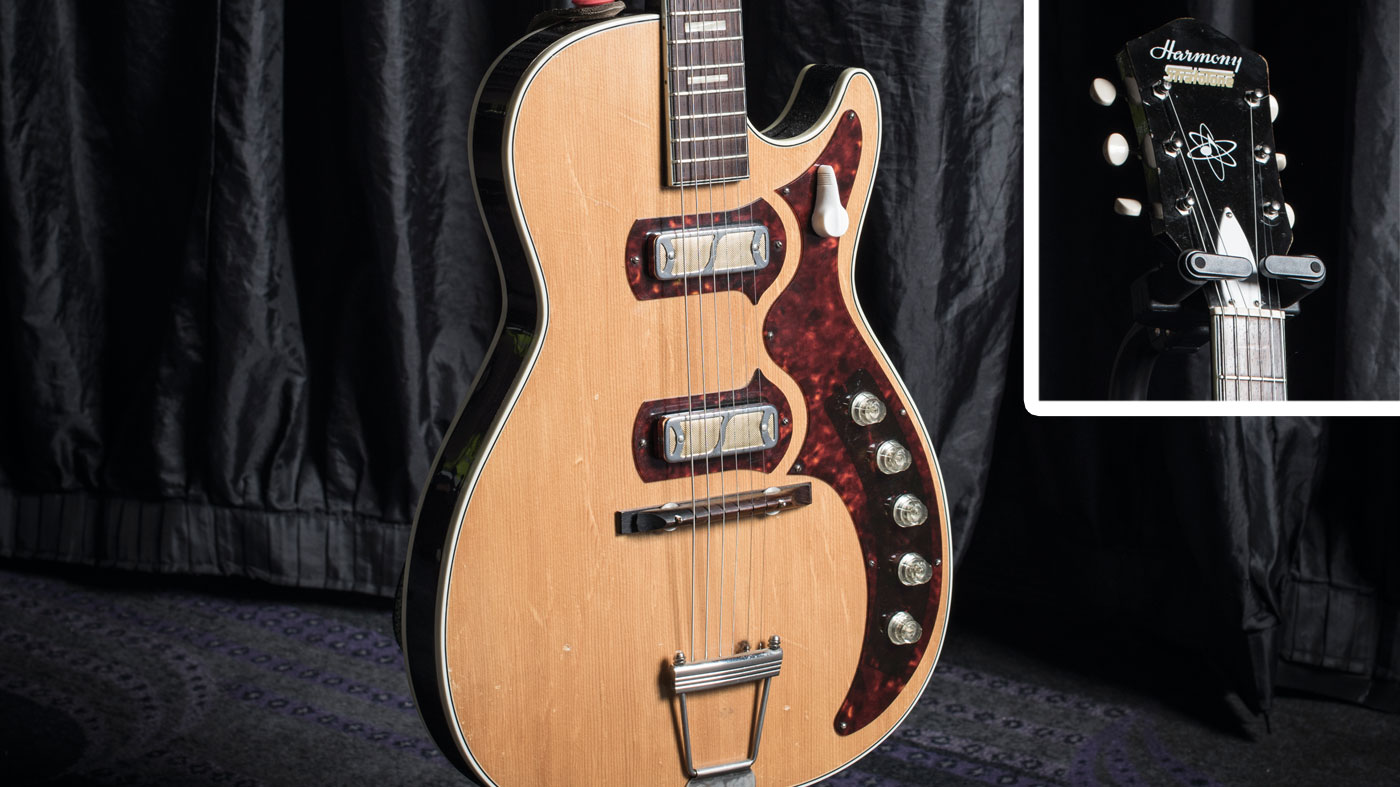
1959/60 Harmony Stratotone
Dallas Green: “I’ve had this one for probably eight years now.
I’d often just have it at home up on my wall because I just love the way it looks
“I’d often just have it at home up on my wall because I just love the way it looks but, when we were rehearsing for this tour, I brought it along just because we were moving house at the time and I was packing all of my stuff up.
“I found that it works perfectly for two songs in the set, Wasted Love and Killing Time. With the sound of these gold foil pickups, it just makes perfect sense for them. This also gets capo’d, on two or three, and then it’s also used in standard tuning.”
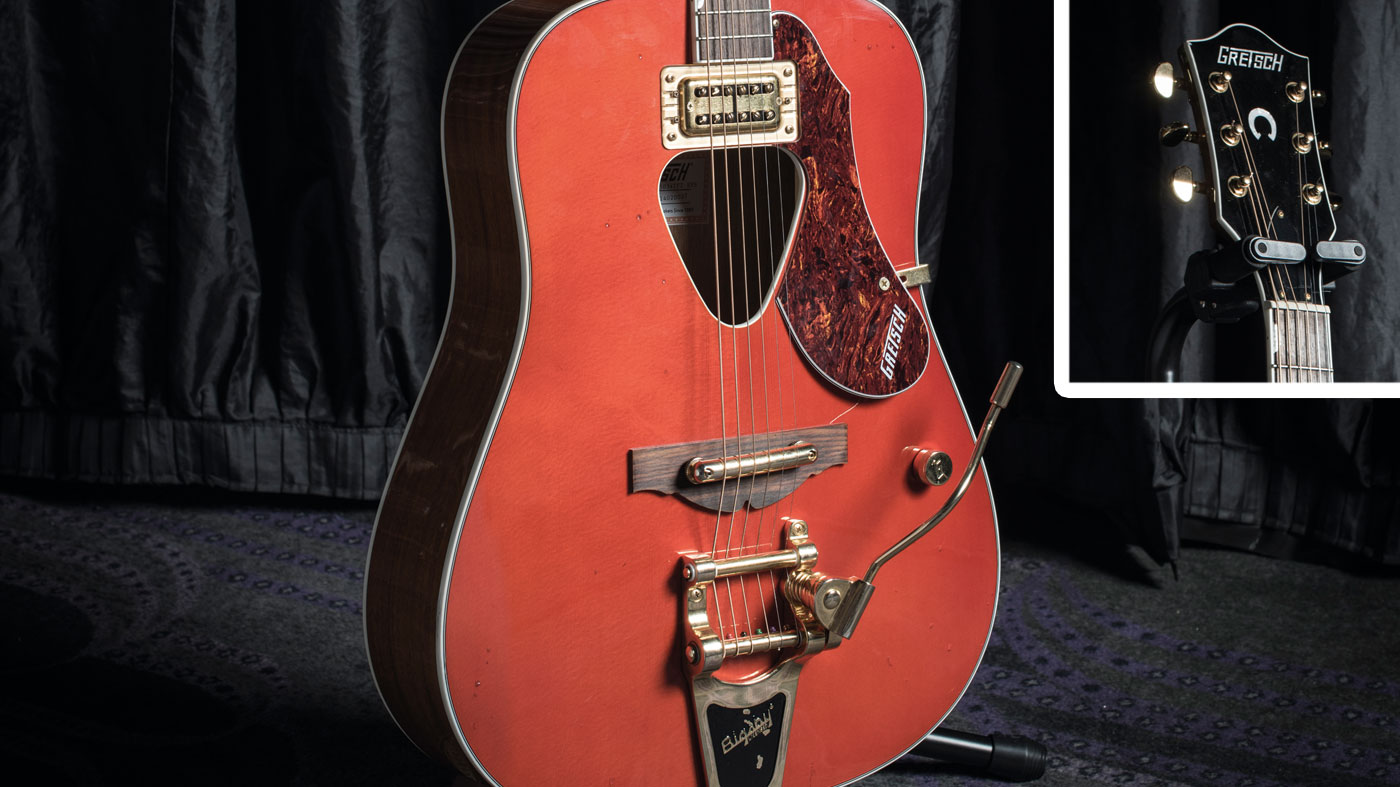
Gretsch Rancher
Dallas Green: “Then of course, we’ve got Mr Wacky! This is just a super cool guitar. I just saw a picture of it online and I was like, ‘What the fuck is this?’
If you put some distortion behind it, it sounds really gnarly
“So I emailed Matt [Steinke, Dallas’s guitar tech] and was like, ‘Hey man, maybe you can ask the guys at Gretsch if I can buy one of these?’ because I couldn’t find one online. So he sent the Gretsch guys an email and they were like,
“‘We’ll give him one!’ It’s been used in the set ever since. We run it through the amp and, depending on what effects you use, you can almost make it sound like a Wurlitzer. If you put some distortion behind it, it sounds really gnarly… and you don’t ever see a Bigsby on an acoustic guitar!”
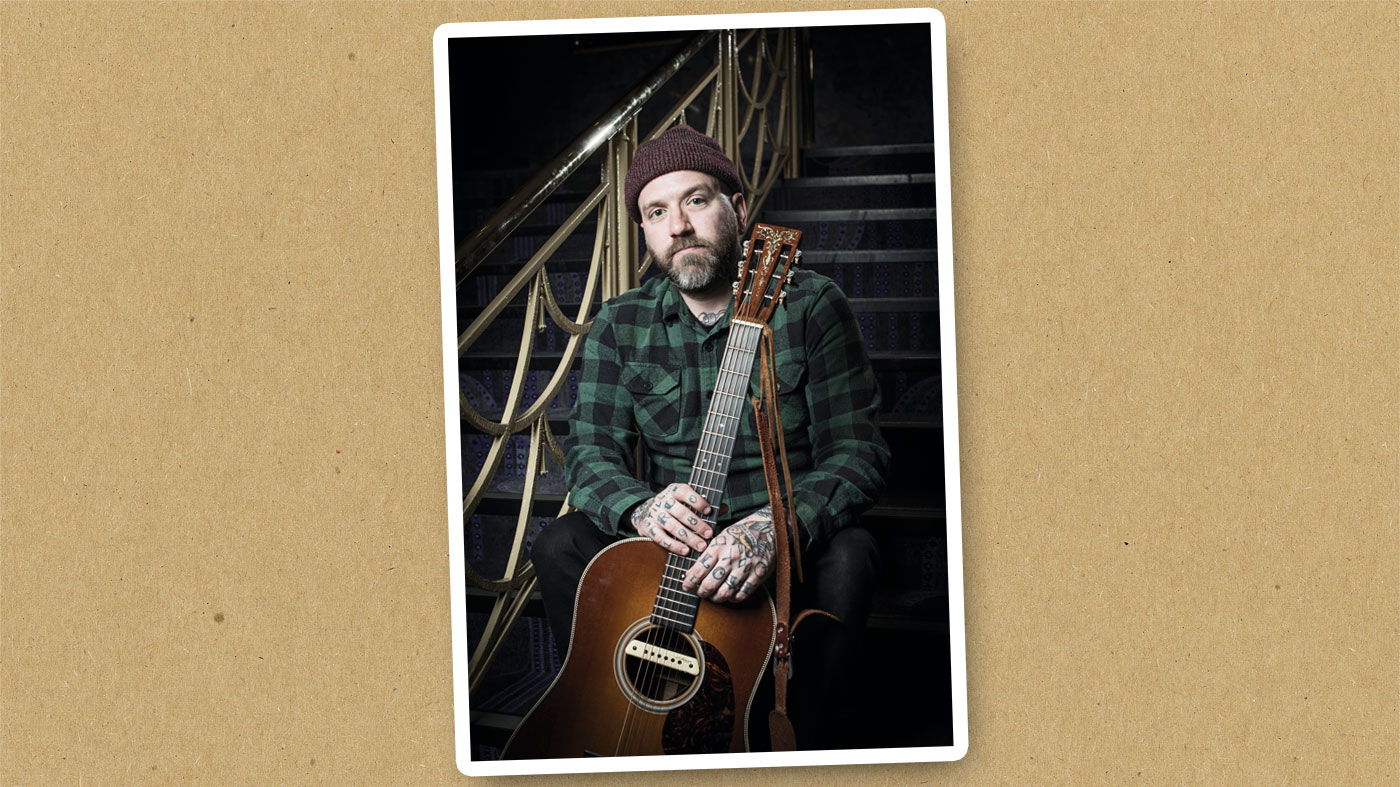
Martin Custom Shop HD-28VS
Dallas Green: “This is the main acoustic guitar that I play. I’m a Martin Ambassador and, with that, you get to design your own guitar and they’ll build you it.
I’ve had this guitar ever since we started touring with this band over three years ago
“I just emailed Fred Green - who used to be head of the custom shop - a couple of ideas and let him run with it. I said I wanted a slotted headstock, a shorter scale neck and a Sunburst. I love it.
“I’ve had this guitar ever since we started touring with this band over three years ago now and it’s been used for every show. You can see where we capo it a lot because it’s wearing [the neck] and I love that too!”
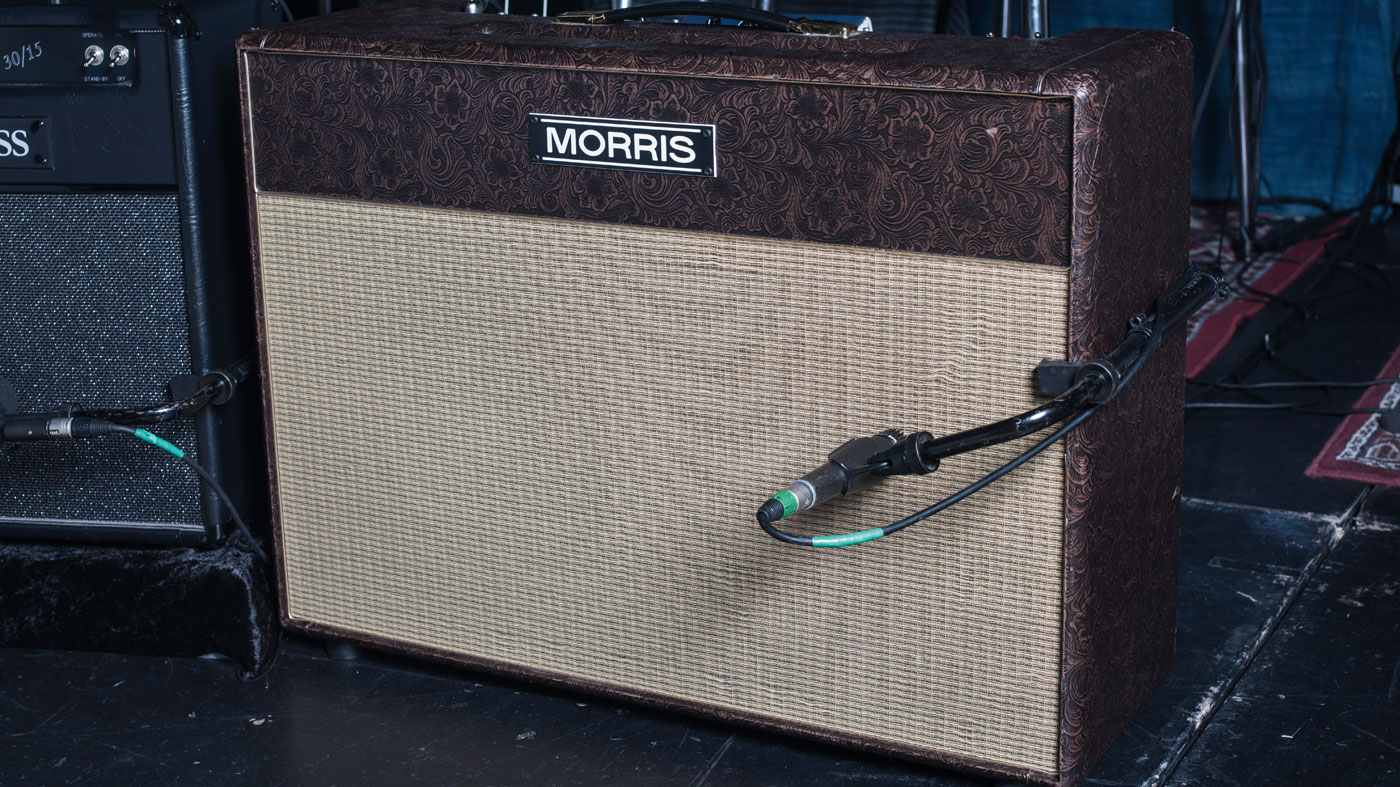
Morris Rock Grinder
Dallas Green: “Glen Morris is a guy from Welland, Ontario in Canada and he’s a custom amp builder. He built me a 100-watt head that I used in Alexisonfire for years and years and that’s the best-sounding amp I’ve ever played.
It’s just like a 30-watt single-channel amp, almost like an AC30, but with a bit more to it
“When I started doing City And Colour more and more, I wanted him to build me an amp because the 100-watt head would be too loud. The Rock Grinder is usually a two-channel 50-watt Bluesbreaker-type vibe but I didn’t need the two channels so what we did is we took out and disconnected some of the knobs.
“Now it’s just like a 30-watt single-channel amp, almost like an AC30, but with a bit more to it. This is the amp that’s been with me probably for the last six years and it’s the bulk of my live electric guitar sound. The settings are just pretty much almost in the middle and the grind, which is your gain, is just adjusted depending on what the stage sounds like.”
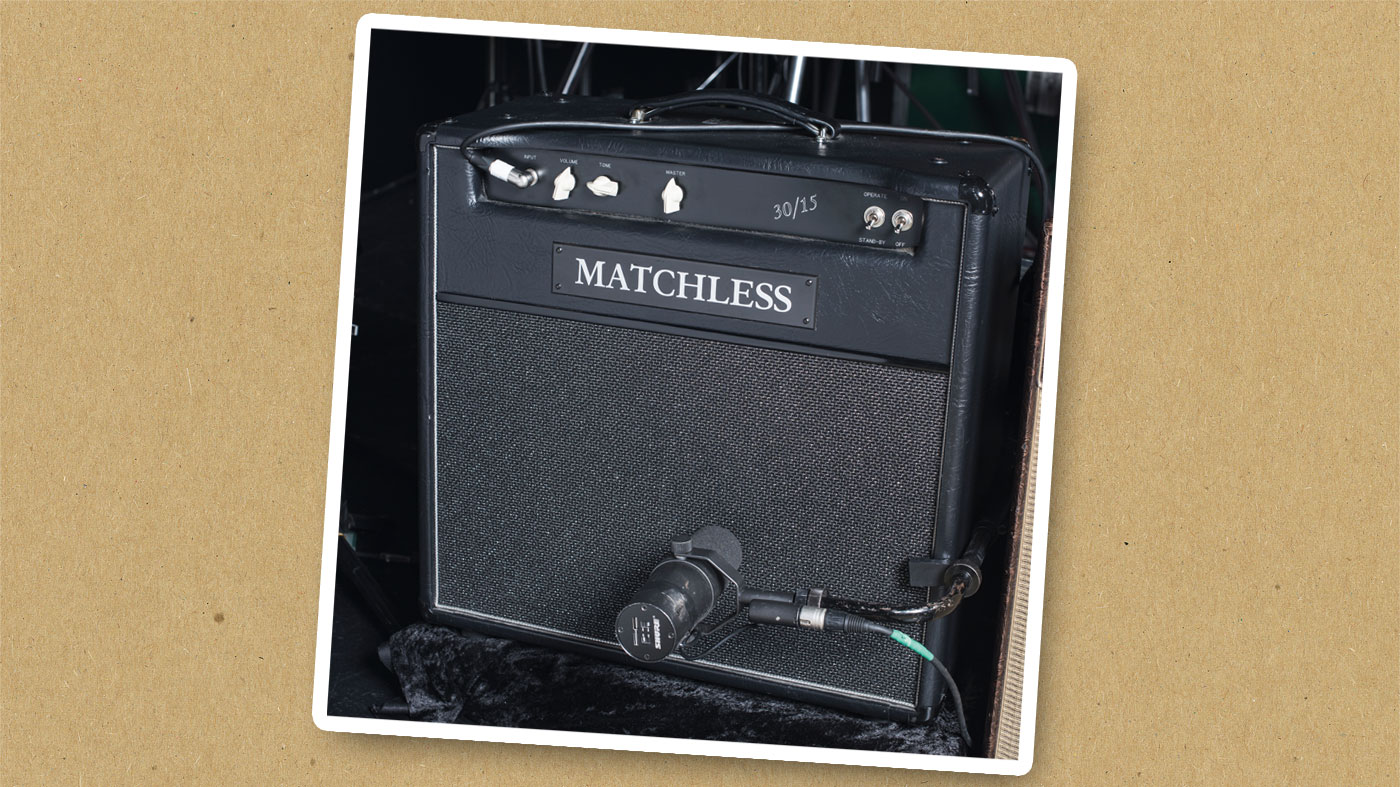
Matchless 30/15
Dallas Green: “This Matchless, which I found in a music shop in Toronto, is great and so simple. It has a master volume, volume and tone, and you can switch it from 15 to 30 watts. I love it.
There’s a 1x12 in there. It’s crisp, clear and it takes pedals really well
“There’s a 1x12 in there. It’s crisp, clear and it takes pedals really well. I’ve got this Morgan AC45 out with us, too, and we switch back and forth between that and this, and sometimes we have all three. I run the Matchless and the Rock Grinder both at the same time, both loud and then I just run a bunch of shit into them.”
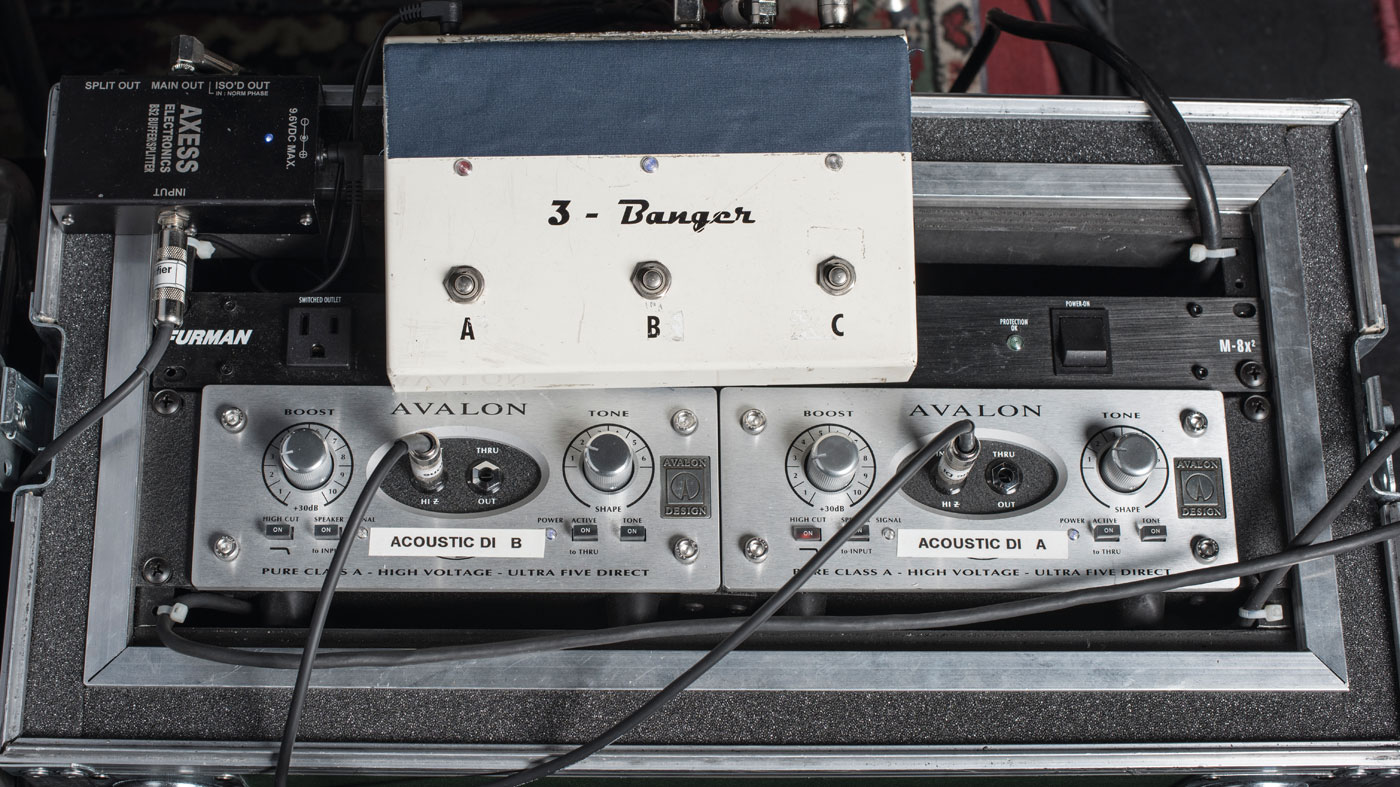
Avalon U5S Preamps
Dallas Green: “These are the Avalons for the acoustics, which we’ve been using for maybe six months. They’re great.
We used to run the acoustics through the LR Baggs DI, but the Avalons just seem a bit more versatile
“The acoustic guitar is hard to amplify live so you’ve got to try and find what works for you and your songs and we’ve got a pretty good grasp of what’s working for us and it’s the Avalons.
“We used to run the acoustics through the LR Baggs DI, but the Avalons just seem a bit more versatile for the rooms. You can adjust the gain and the output depending on where you’re playing.”
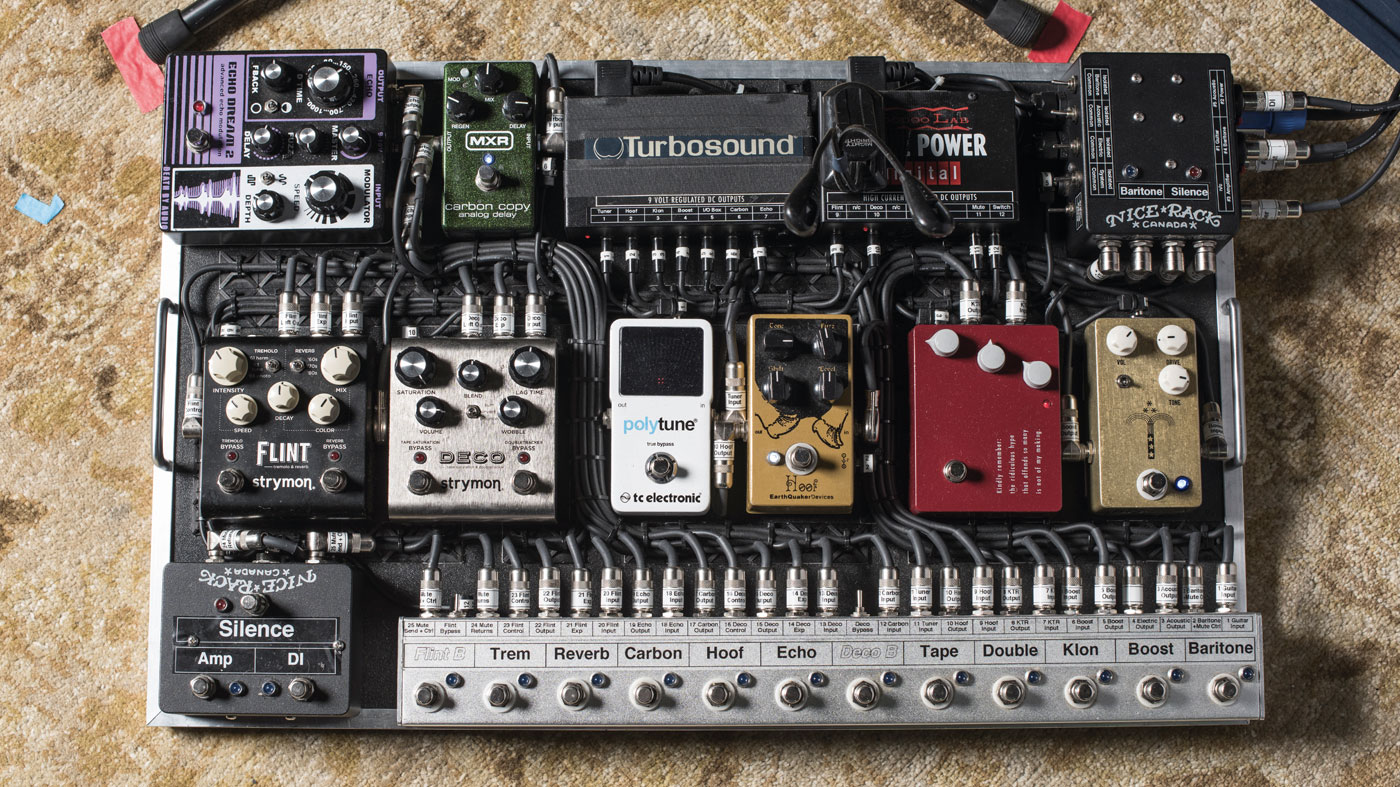
Dallas' pedalboard
Strymon Flint
Dallas Green: “I just got this and I really love it. I used to have a reverb pedal and a trem pedal separately but this does both, which is great. The reverb is almost always on because I don’t have amp reverb.”
MXR Carbon Copy
“I’ve had this MXR Carbon Copy for a long time now and it’s probably my favourite pedal. I just really like the simplicity of how the delay sounds.”
Death By Audio Echo Dream 2
“This is what I call a ‘world-ender’! You step on it and it sounds like everything is destroying… it’s got fuzz and delay and I use it for the ends of songs when we’re freaking out, just having fun.”
Strymon Deco
“This one is fun. I’ve been using the tape saturation on the Deco a lot, using it as an overdrive.”
Earthquaker Devices Hoof Fuzz
“The Hoof Fuzz is pretty awesome and kind of Big Muff-y. For Woman, which is a pretty long song, I use the Deco tape saturation for the first big ‘open up’ part and then, for the end, I use the Hoof Fuzz.”
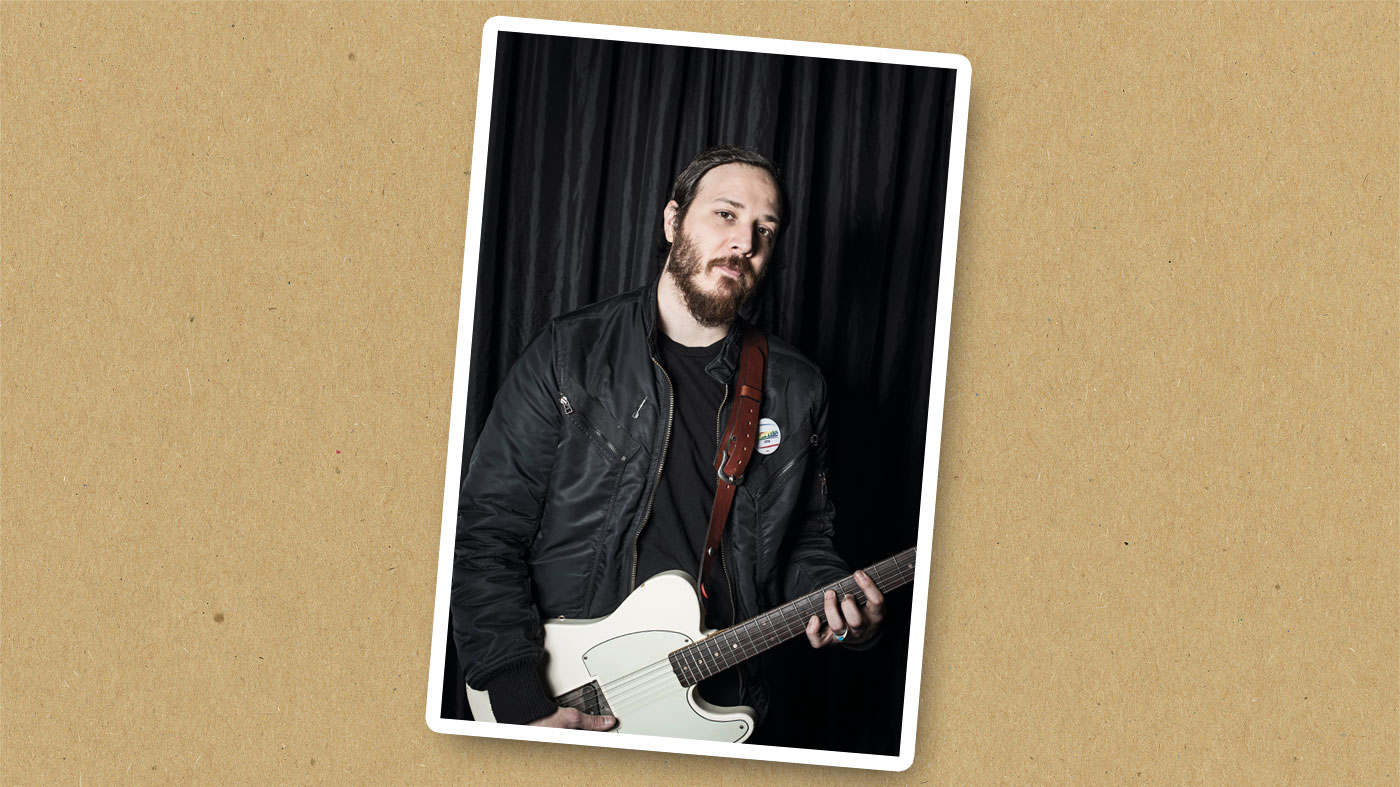
Fender Esquire
Dante Schwebel: “When I started playing with City And Colour, this was maybe the only guitar I brought out with no back-up.
I use this for all the country-sounding stuff. I love the one pickup thing
“It’s sort of a mixed bag. I don’t know what is Fender on it and what isn’t and I couldn’t tell you how old it is but I would guess somewhere in the 90s. Some of the dots have fallen out but I saw Keith Richards’s Tele has a couple of dots missing so I was like, ‘Shit, I’m not going to worry about it then!’
“I use this for all the country-sounding stuff. I love the one pickup thing. If you only have one option, you play differently. I like to have the amps real loud and play with a real light touch and then the volume on two or three.
“You’ll be surprised at how good that sounds but people kind of neglect it. You see a lot of guitar players where the tone and volume are on 10 and then they figure things out with their feet. I just couldn’t do that.”
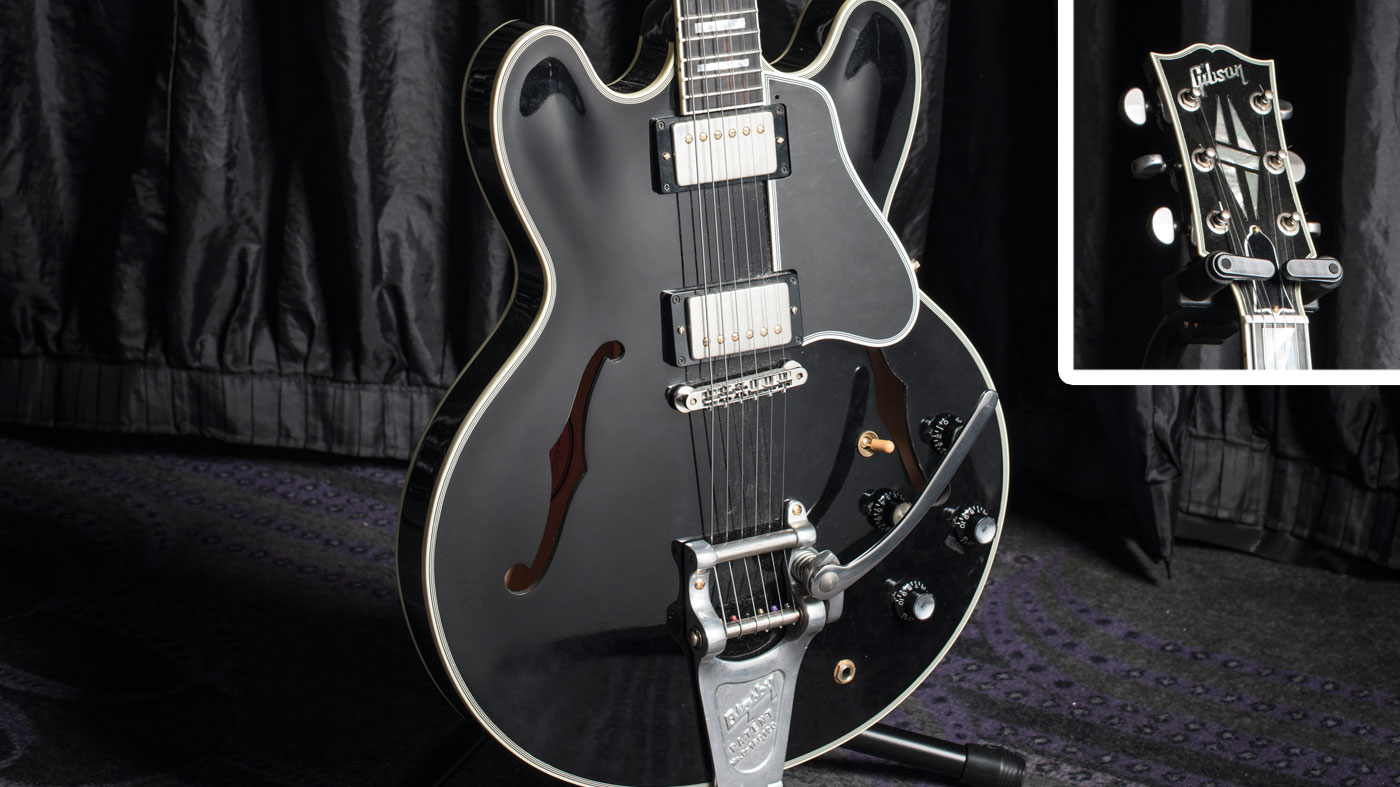
Gibson ES-355
Dante Schwebel: “I’ve had this for several years. I think it’s mid-2000s or something like that. This plays all the rocking stuff, anything that’s really loud and heavy.
“The feedback doesn’t take off terribly on it either. I use flatwounds on it and I use the Bigsby a lot, too. I always play in standard with City And Colour.”
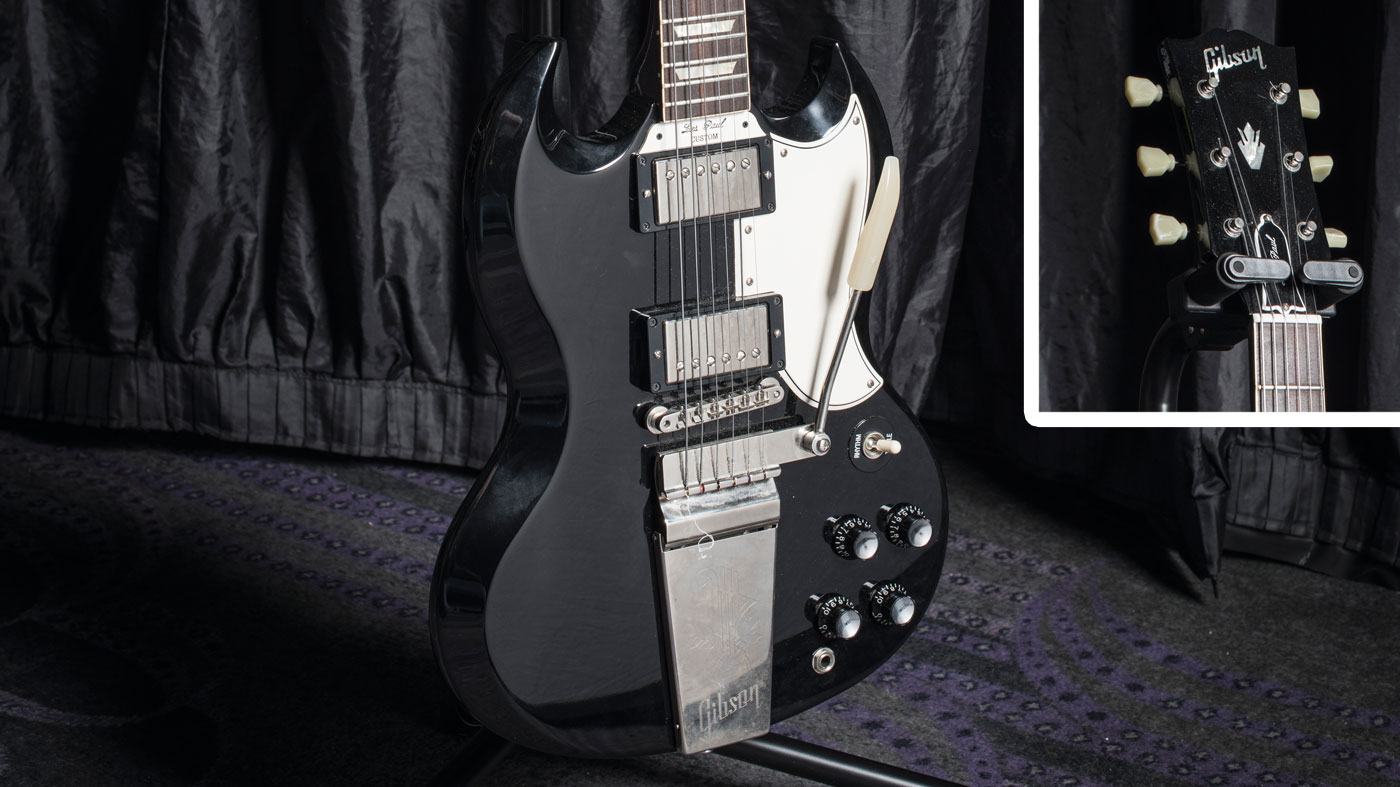
Gibson SG
Dante Schwebel: “This SG is new for this tour and I hadn’t played an SG in 20 years. I think this is mid-2000s, too.
“SGs are kind of their own thing, man. They’re sweeter-sounding than I would have thought. You can get almost Fender-y sounds from this SG, which are pretty nice yet you never get the ice pick-y sounds. Sometimes a Tele in some rooms will just be so shrill.”
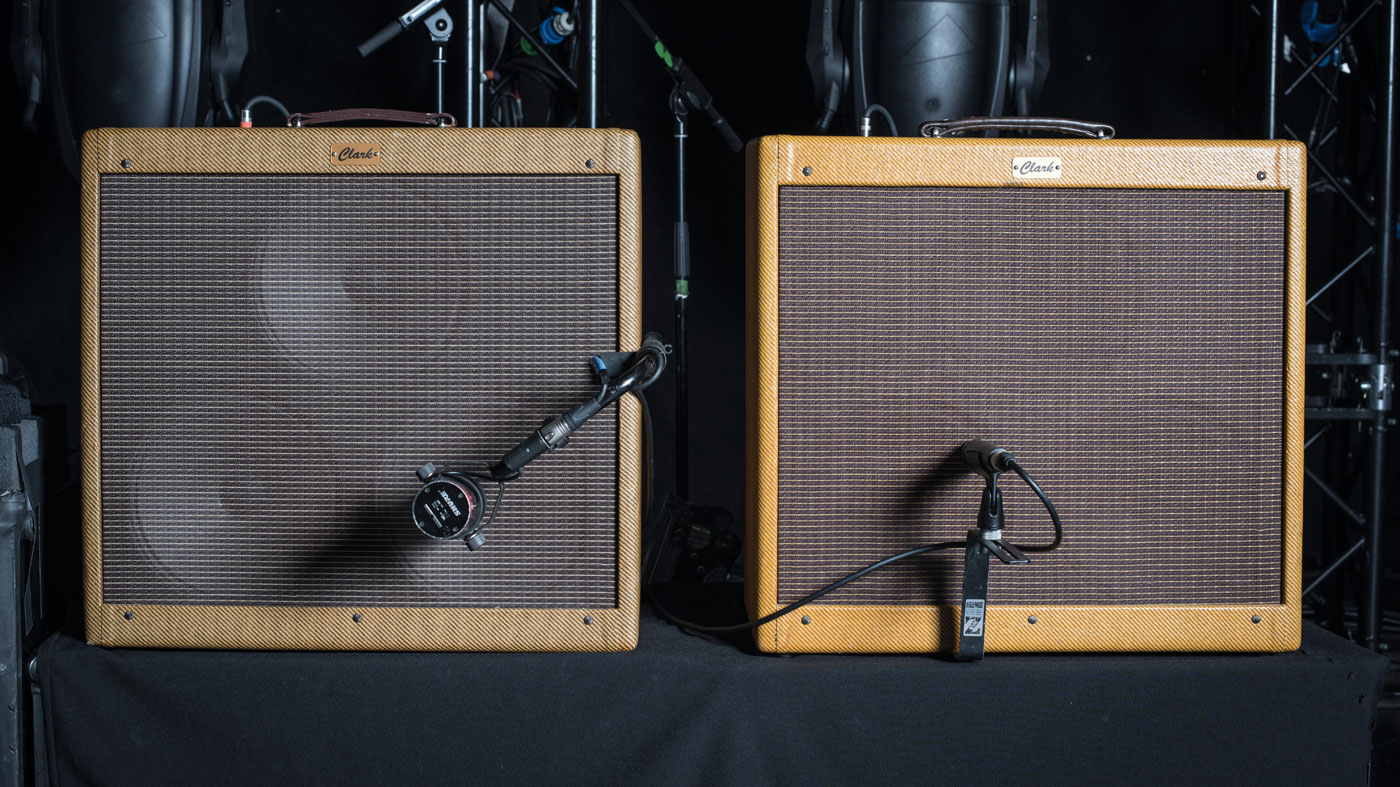
Clark Tyger Amps
Dante Schwebel: “These Clark amps are basically copies of the old tweed Fender Bandmasters. I played on a real tweed Bandmaster once before and I just fell in love with it. They’ve got 3x10 speakers and they have a unique sound.
It’s one of the best-sounding reverbs I’ve ever heard
“You get a weird spread with the 3x10s. I think they’re 26 watts so they’re not terribly loud, which is nice, but they’re both on the whole time. Each one has this real fucking killer reverb unit in the back. It’s one of the best-sounding reverbs I’ve ever heard. They’re kind of like the old Fender Reverb tanks so you get the ‘dwell’ knob.
“Everything’s cranked up, they’re both on 10 and, if it’s going to be a pretty song, I’ll be playing the guitar on one or two. The pedals go through one Clark while the other is just straight.”
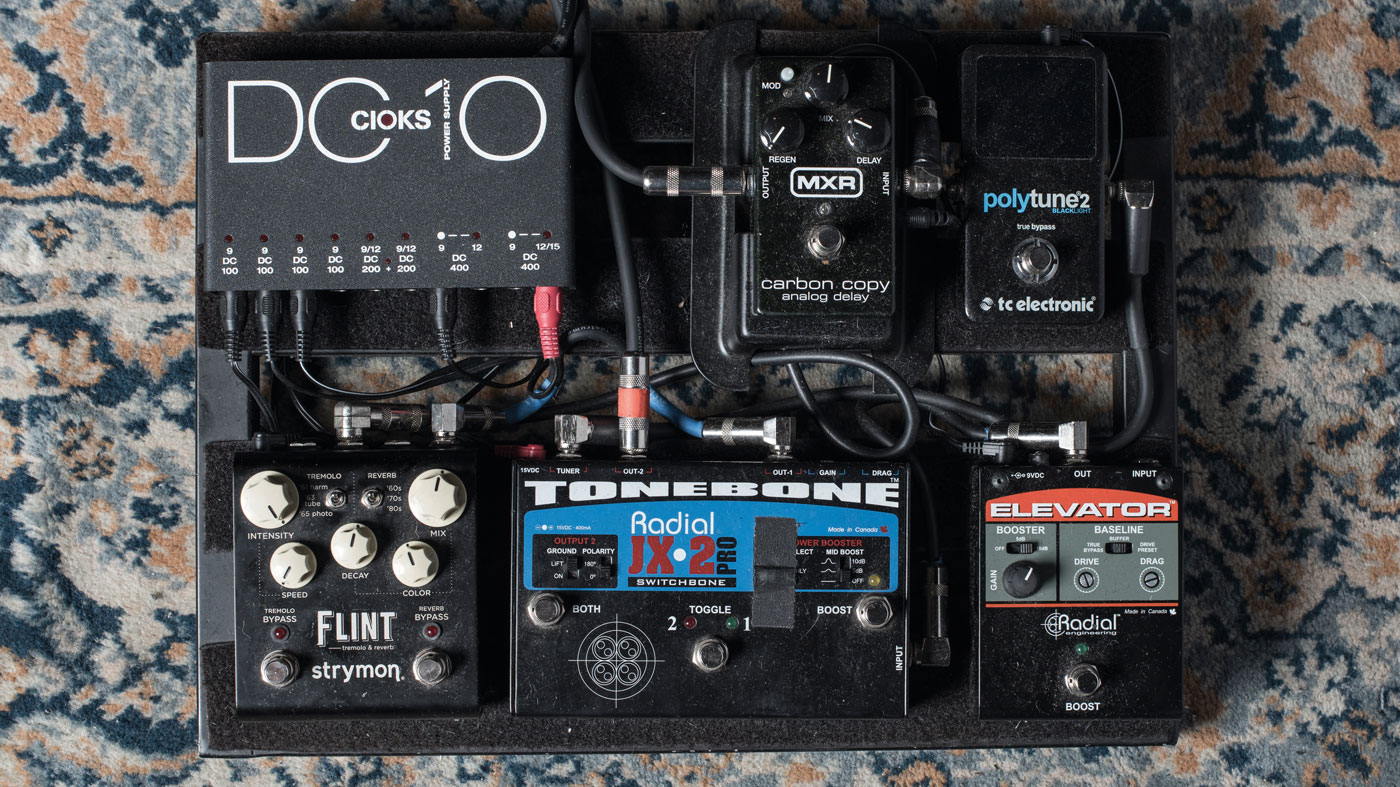
Dante's pedalboard
Strymon Flint
Dante Schwebel: “I use this a lot for Woman. It’s got this really swirly almost like Leslie sound with this harmonic tremolo and this never-ending reverb thing, which is really cool for that song.”
MXR Carbon Copy
“On a couple of songs, there’s a slapback and this sounds real good. I might use it on Lover Come Back’ or Waiting or anything that’s kind of country-ish, just to get a little bit of a Nashville kind of thing going.”
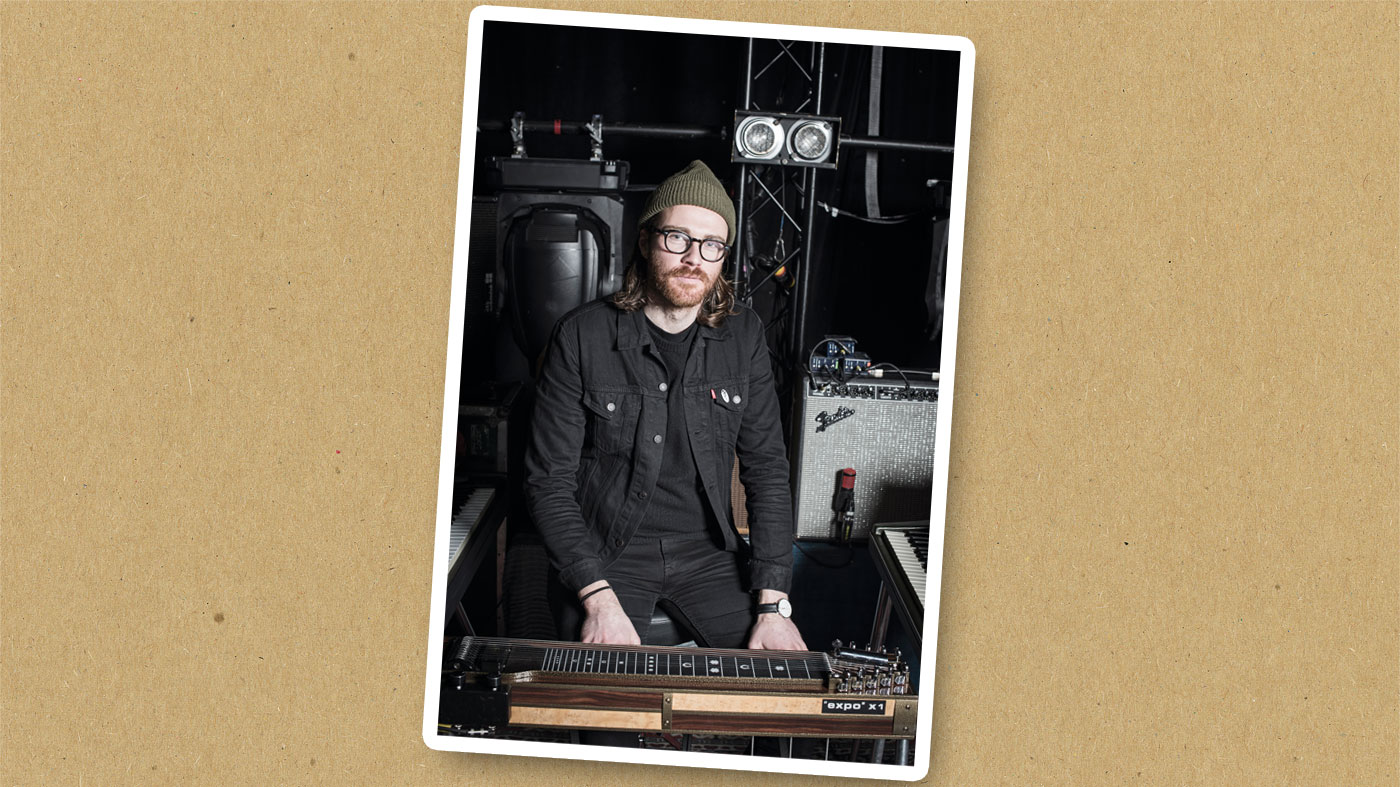
Verve and steel
City And Colour’s pedal-steel (and keyboard) maestro Matt Kelly gives us the lowdown on his unique rig…
It’s got a nice, warm, balanced tone, which is perfect for the kind of playing I do with City And Colour
“I play a GFI Expo S10 with a George L E-66 pickup tuned to Emmons E9. It’s got a nice, warm, balanced tone, which is perfect for the kind of playing I do with City And Colour.
“I’ve got a Milkman amp and it’s hands down the best-sounding amp I’ve ever played through. These amps are hand wired by Tim Marcus in San Francisco. In my effects chain I’ve got a Goodrich L-120 volume pedal, an EarthQuaker Devices Hoof Fuzz, a Boss Phaser, a Strymon El Capistan and Strymon Flint.
“I’ve also got this genius little expression unit that our tech Kenny built for me based on an idea my friend Erik and I came up with. I wanted a way to control the mix of my Strymon delay and reverb at my fingertips. Kenny whipped up a nano-sized pedal box with two pots that I velcro on to the front of the bridge end of my steel so I can easily access them with my picking hand while playing to change the settings.”
Don't Miss
City And Colour (Dallas Green) performs Of Space And Time unplugged

